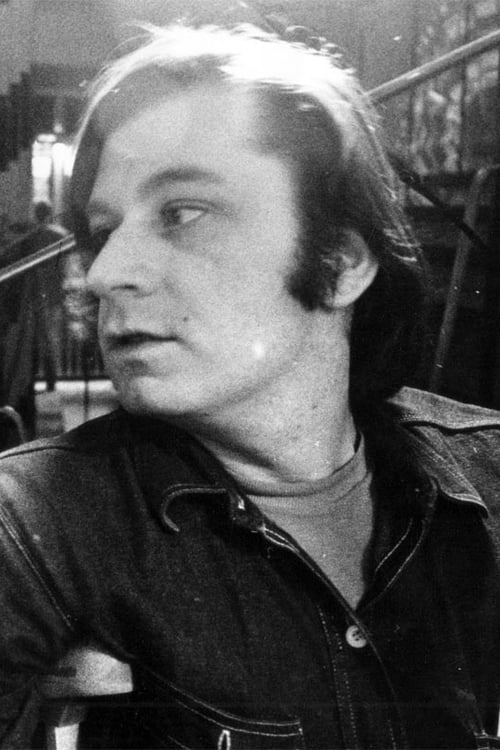
Director
"Two independent filmmakers, who willingly practise self-fiction, are filming each other in order to communicate better. In spite of their differences in language and style, the film is mainly an attempt to imitate, or even to become, the other, which is doomed to failure. But the film is in fact the story of this collision" - Boris Lehman

Himself
This distinctly personal journey into the artistic possibilities of independent film is not to be missed. Jonas Mekas, Jean-Pierre Gorin, Robert Kramer and many other visionaries and mavericks of the silver screen – as well as a book seller, a critic and a psychoanalyst – discuss what cinema has meant to them, what it is and what it could be and, implicitly, how it has changed over the 18 years in which this film was shot. Director Boris Lehman leads the charge, drawing in moments of absurdist humour and inventive camera work; he keeps things raw and spontaneous. His encounters with the now much-missed Jean Rouch and Stephen Dwoskin are particularly touching and stand testament to their personal playfulness and candour. An engaging, absorbing, epic odyssey of a movie.

Himself
Stephen Dwoskin was born in New York in 1939 and began making independent shorts there in 1961. In 1964 he followed his research work to London where he settled and participated in the founding of the London Filmmaker’s Co-op. His experimental films, for which he himself does the camera work, play with ideas of desire, sexual and mental solitude and the passage of time. In his films he also explores representation in cinema, performances, personal impressions and his own physical handicap which has been a source of inspiration for him throughout his career. His sensitive and emancipating works have been the subject of various international presentations.

Director
Stephen Dwoskin’s final film is a meditation on the subjective experience and cultural concepts of ageing. The film is an ode to the texture, the beauty, the singularity of aging faces and silhouettes, a hypnotic poem in the Dwoskin meaning of the term which is long observations of very tiny details. A gesture, a pause, a look, a moment. Throughout his films intimacy has always played a leading role and this is also true for Age is..., all the faces being close friends, or close friends relatives and sometimes even Stephen himself.

Director

Director
'The Sun and the Moon, a film fairy tale, is about two women’s terrifying encounter with ‘Otherness’ in the form of a man, abject and monstrous, and for them to either to witness, accept or partake in his annihilation. All are caught in their own isolation and are fearful of the menace that has to be met. The film, as a personal interpretation of Beauty and the Beast, enciphers concerns, beliefs and desires in seductive images that are themselves a form of camouflage, making it possible to utter harsh truths.'

Director
Liu, crying, sings "Signore, ascolta!" Liu can bear it no more. She sinks to the ground, exhausted and sobbing. Puccini makes tears of joy and of sadness. Ascolta! was inspired by Puccini"s opera Turandot. A close-up of a girl who is deeply moved as she listens to the aria “Signore, ascolta!” during Giacomo Puccini’s Turandot.

Director

Director
Short strip by Stephen Dwoskin.

Director

Director
A summer in Beechdale Road. A meditation on the passage of time, the time in between things and the time spent together - and apart. The film was made to be screened in a loop, without credits.

Director
Lost dreams is made out of those little remnants of images, from a single glance to a detailed moment, of those women from youth’s love and young dreams. They are woven together, like fragments of the mind, from the ends of the film to the corners of the frame.

Director
2003 short by Dwoskin included on a 14 film box set released in France

Director
2003 short by Dwoskin available on a 14 film box set released in France

Director
2003 short by Dwoskin included on a 14 film box set issued in France.

Director
A short and lyrical film about looking, and how that look shapes the relationship between those people whom we call friends; some gone, some found, but all apart.

Director

Director
Intoxicated by My Illness (in which images photographed by several people are extensively superimposed) loosely and dreamily tracks a phase in Dwoskin's recent life that took him from medical examination to intensive care.
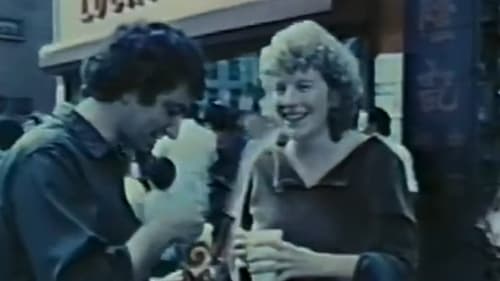
Self
Filmmaker Jonas Mekas films 160 underground film people over four decades.

Director of Photography
The film is just this kind wandering through the personal ways and whys of different kinds of pain in different kinds of people. The film searches through the many levels of pain and finds it in its unique position between disaster and pleasure. Pain is..thus plunges us instantly into the midst of controversy and the unknown.

Writer
The film is just this kind wandering through the personal ways and whys of different kinds of pain in different kinds of people. The film searches through the many levels of pain and finds it in its unique position between disaster and pleasure. Pain is..thus plunges us instantly into the midst of controversy and the unknown.

Director
The film is just this kind wandering through the personal ways and whys of different kinds of pain in different kinds of people. The film searches through the many levels of pain and finds it in its unique position between disaster and pleasure. Pain is..thus plunges us instantly into the midst of controversy and the unknown.

Himself/Narrator
The film is just this kind wandering through the personal ways and whys of different kinds of pain in different kinds of people. The film searches through the many levels of pain and finds it in its unique position between disaster and pleasure. Pain is..thus plunges us instantly into the midst of controversy and the unknown.

Director
This autobiographical film evolves from the perspective of events and images over a period of over 50 years.

Director
"Hi Steve" and "Dear Robert" exchanged between two filmmakers: Robert Kramer and Stephen Dwoskin. "The Videoletters strip away the formalities that had littered our work and thinking. Through the making of the 'video letters' we started to relearn and re-look.". The Videoletters provide the benefits of reflection -- a lubricant for thought made out of very basic stuff -- the reduction of complexity -- and they cemented a brotherhood. Sadly, Robert's untimely death prevented the continuation of the "video letters" and they remain unfinished and unedited. (S.D.)

Director
‘… Face Of Our Fear is a richly conceived essay about the evolving image of disability. Dwoskin, a highly accomplished experimental filmmaker, begins with the declaration that the historically distorted images of people with disabilities constitute a “negation of selfhood”. He then traces this concerted effort through two thousand years of Western culture, beginning with the Greek notion of the idealized body and its opposite, the fabulous races. Using contemporary films clips, literary quotations, performance, and pictorial records, Face Of Our Fear looks at the Court’s infatuation with “monsters” during the Middle Ages, the “charity cripples” of the Enlightenment, the freakshows of the nineteenth century, each a resort to oppressive stigmatization.’- Steve Seid

Director
"Either in its natural state or with its embellishments of makeup, jewels, and hairdos, nothing can restrain the imagination from the most forms of speculation. All the senses are concentrated in this one head: eyes, ears, nose, lips, tongue and the skin which covers all with its network of vibrating nerves. One imagines the senses, the counterpart of our own, ready to respond with all the various moods, suggestions and agreements. Through the eyes alone, when placed in contact with our own, a visual dialogue and interplay is embarked upon. And when the lips, two bodies fitting together in perfect harmony, break into a smile, they invite further exploration. Then, with the engagement of time, this dialogue shifts from speculation to realization. The face transforms from its abstract suggestiveness to the singular projection of seduction. It is no longer anyones face; it is the face of one particular person" (Stephen Dwoskin)

Director
A film about the writing of Brendan Behan realised through three performers wandering through Dublin reciting extracts from his work. Together it tells of Behan's life and also prison, about executions,about the fear that sometimes penetrates the soul and of the disgrace of day to day life in jail. Their Irish accents strengthen and empower the words during the unrolling of the 30 minute film immediately grabbing the harshness, force and cry of Behan's world. "The Irish dislike those of their kind who think", said Behan, who wrote a lot, lived a lot, and drank a lot.

Cinematography
An old man remembers the troubled relationship he had with his mother, the erotic games, and the fantasies in which she managed to trap him.

Director
An old man remembers the troubled relationship he had with his mother, the erotic games, and the fantasies in which she managed to trap him.

Director
Stephen Dwoskin's Arts Council film tells the story of Ballet Negres, an innovative all-black dance troupe founded by Jamaican dancer Berto Pasuka and active in Europe from 1946 to 1952. Exploring the company through archive film and photographs, as well as a reunion of the original members after 35 years, it climaxes with a vibrant performance of Pasuka's They Came by young black dancers. The film's fragmented style and lack of traditional talking heads can be challenging, but its historic value and rhythmic blend of sound and image reward the persistent viewer.

Himself
A exploration of the origin, theory, philosophy and themes of Stephen Dwoskin's films from 1963 to 1984.

Born in 1904, Brandt was a shy and enigmatic man who dominated British photography for decades. His early studies of class-divided Britain were followed by the postwar series of "distorted nudes", shot on beaches and inside rooms. The film is a fitting final portrait of Brandt (it was completed in the year he died), and recomposes his work in cinematic terms. The camera moves through an apartment where the pictures were taken, to reveal photographs scattered 'in situ'. These are panned to show the surrounding space, the angle of vision and a model who reconstructs Brandt's original image. Dwoskin emphasises visual atmosphere through the language of the eye.

Director
Born in 1904, Brandt was a shy and enigmatic man who dominated British photography for decades. His early studies of class-divided Britain were followed by the postwar series of "distorted nudes", shot on beaches and inside rooms. The film is a fitting final portrait of Brandt (it was completed in the year he died), and recomposes his work in cinematic terms. The camera moves through an apartment where the pictures were taken, to reveal photographs scattered 'in situ'. These are panned to show the surrounding space, the angle of vision and a model who reconstructs Brandt's original image. Dwoskin emphasises visual atmosphere through the language of the eye.

N°121
Reel 13 of Gérard Courant's on-going Cinematon series.

A personal film by experimental director Stephen Dwoskin.

Cinematography
A personal film by experimental director Stephen Dwoskin.

Writer
A personal film by experimental director Stephen Dwoskin.

Director
A personal film by experimental director Stephen Dwoskin.

Camera Operator
An aged art connoisseur (Beaumont) and his young female neighbour (Coles), who has a job posing naked in a club, meet and exist in fantasy and reality. Although this raises certain much-discussed questions about the nature of representation, and about the construction of narrative and daydreams in films, 'Phoelix' tends to treat these as just pretty and pertinent issues, opting instead for a mannered concentration on detail.
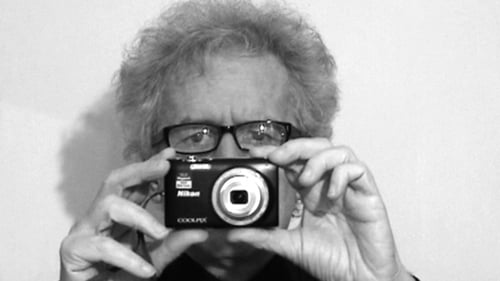
N°121
Синематон» - 201-часовой фильм французского режиссёра Жерара Куранта. Он считается одним из самых длинных фильмов когда-либо выпущенных. Создающийся более 35 лет (с 1978 по 2018), он состоит из серии 3027 беззвучных виньеток, каждая продолжительностью по 3 минуты 25 секунд, в которых показываются различные знаменитости, художники, журналисты и друзья режиссёра, каждый делающий то, что он хочет, за отведённое время. В фильме показаны режиссёры: Барбет Шредер, Нагиса Осима, Фолькер Шлендорф, Кен Лоуч, Юсеф Шахин, Вим Вендерс, Джозеф Лоузи, Жан-Люк Годар, Сэмюэл Фуллер и Терри Гиллиам; гроссмейстер Жоэль Лотье и актёры Роберто Бениньи, Стефан Одран и Жюли Дельпи. Терри Гиллиам показан поедающим купюру в 100 франков. Сэмюэл Фуллер курит сигару. Своим любимым героем фильма Жерар Курант считает семимесячного ребёнка.

Director
Avant-garde appeal on behalf of and made by the adventurous leftist London cinema, The Other Cinema, using the facilities provided by the BBC community programme unit.

Avant-garde appeal on behalf of and made by the adventurous leftist London cinema, The Other Cinema, using the facilities provided by the BBC community programme unit.

Cinematography
'The Silent Cry is a fictionalised narrative film, based on documentary facts and extracts of one English girl's memories and thoughts, all surrounded, and directed towards her particular dilemma. This dilemma can be summarized as her basic inability to have relationships, especially sustained relationships, and particularly with men. This is the total of her statement and the film. The construction and flow of the film follows the way she thinks - it is her point of view that is followed in the film. So all things are the way she remembers and dwells on them, and which are important to her.' - S.D.

Director
'The Silent Cry is a fictionalised narrative film, based on documentary facts and extracts of one English girl's memories and thoughts, all surrounded, and directed towards her particular dilemma. This dilemma can be summarized as her basic inability to have relationships, especially sustained relationships, and particularly with men. This is the total of her statement and the film. The construction and flow of the film follows the way she thinks - it is her point of view that is followed in the film. So all things are the way she remembers and dwells on them, and which are important to her.' - S.D.

Director
For this remarkable experimental film, the provocative avant-garde legend Stephen Dwoskin gathered together a group of strangers and filmed them as they explored their fantasies over a period of five days: a project that now sounds a little like TV's Big Brother. The ceremonial gowns and make-up here not only evoke the eroticism of European horror movies but also highlight the film's interplay between performance and intimacy. Jonas Mekas called it 'theatre of life'.

Director
The film questions the possible viewing positions with the girl; in other words, who and what is looking at whom? and is the girl alone or with another – or is the camera position that of voyeur or protagonist? The only way to figure it out is to spend some time with her! – S.D.

Director
This amusing short features a real life Labour party canvasser who comes looking for Dwoskin (never realizing that he's the camera man), and instead is treated to the provocations and manipulations of the housemates.
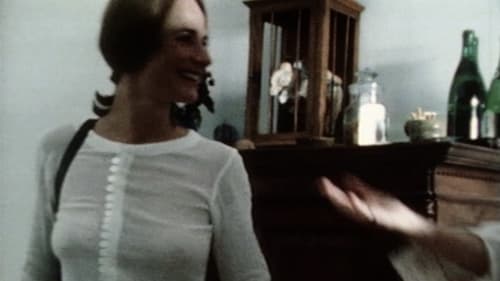
Described by Stephen Dwoskin as "a documentary without being one," the basis of BEHINDERT is autobiographical: the story of a physically disabled man and a physically normal woman- played by Dwoskin (who has a post-polio disability) and Carola Regnier- who confront the difficulties of a relationship. The two were no longer a couple at the time Dwoskin made the film, yet it burns with the passion and intensity of true love.

Director
Described by Stephen Dwoskin as "a documentary without being one," the basis of BEHINDERT is autobiographical: the story of a physically disabled man and a physically normal woman- played by Dwoskin (who has a post-polio disability) and Carola Regnier- who confront the difficulties of a relationship. The two were no longer a couple at the time Dwoskin made the film, yet it burns with the passion and intensity of true love.

Camera Operator
Evolves around the rooms of a house as one of the main characters, Lisiska, is waiting and is studied in depth as she prepares herself for a meeting. The film attempts to display sexual barriers and misconceptions, and about the role-playing and the confusion around the whole question of sexual and sensual involvement. The essence is the confrontation with self-deception, lies and the real fear of contact with both sexes.

Dialogue
Evolves around the rooms of a house as one of the main characters, Lisiska, is waiting and is studied in depth as she prepares herself for a meeting. The film attempts to display sexual barriers and misconceptions, and about the role-playing and the confusion around the whole question of sexual and sensual involvement. The essence is the confrontation with self-deception, lies and the real fear of contact with both sexes.

Cinematography
Evolves around the rooms of a house as one of the main characters, Lisiska, is waiting and is studied in depth as she prepares herself for a meeting. The film attempts to display sexual barriers and misconceptions, and about the role-playing and the confusion around the whole question of sexual and sensual involvement. The essence is the confrontation with self-deception, lies and the real fear of contact with both sexes.

Adaptation
Evolves around the rooms of a house as one of the main characters, Lisiska, is waiting and is studied in depth as she prepares herself for a meeting. The film attempts to display sexual barriers and misconceptions, and about the role-playing and the confusion around the whole question of sexual and sensual involvement. The essence is the confrontation with self-deception, lies and the real fear of contact with both sexes.

Director
Evolves around the rooms of a house as one of the main characters, Lisiska, is waiting and is studied in depth as she prepares herself for a meeting. The film attempts to display sexual barriers and misconceptions, and about the role-playing and the confusion around the whole question of sexual and sensual involvement. The essence is the confrontation with self-deception, lies and the real fear of contact with both sexes.

Cinematography
A man walks towards the camera down the end of a street to the sound of 'Jesus’ Blood Never Failed Me Yet', a composition by Gavin Bryars based on a loop of an anonymous homeless man singing the song. The man’s voice is progressively intensified by an instrumental accompaniment, which increases in density and richness, before the whole thing gradually fades out. Dwoskin’s film was produced to be shown during the premiere of Jesus' Blood Never Failed Me Yet at the Queen Elizabeth Hall, London in December 1972. For Dwoskin, it represents “… the singing voice of the last days of a London drunk (anonymous) as the orchestra raises him to heaven. The faint ghost image of a figure swims gradually to you through the grains of film low light…”

Editor
A man walks towards the camera down the end of a street to the sound of 'Jesus’ Blood Never Failed Me Yet', a composition by Gavin Bryars based on a loop of an anonymous homeless man singing the song. The man’s voice is progressively intensified by an instrumental accompaniment, which increases in density and richness, before the whole thing gradually fades out. Dwoskin’s film was produced to be shown during the premiere of Jesus' Blood Never Failed Me Yet at the Queen Elizabeth Hall, London in December 1972. For Dwoskin, it represents “… the singing voice of the last days of a London drunk (anonymous) as the orchestra raises him to heaven. The faint ghost image of a figure swims gradually to you through the grains of film low light…”

Director
A man walks towards the camera down the end of a street to the sound of 'Jesus’ Blood Never Failed Me Yet', a composition by Gavin Bryars based on a loop of an anonymous homeless man singing the song. The man’s voice is progressively intensified by an instrumental accompaniment, which increases in density and richness, before the whole thing gradually fades out. Dwoskin’s film was produced to be shown during the premiere of Jesus' Blood Never Failed Me Yet at the Queen Elizabeth Hall, London in December 1972. For Dwoskin, it represents “… the singing voice of the last days of a London drunk (anonymous) as the orchestra raises him to heaven. The faint ghost image of a figure swims gradually to you through the grains of film low light…”

Editor
'Dyn Amo' is a 'drama' exploring the distinction between a person's self and his projection of that self to others; and it's a 'horror movie' tragically suggesting how a projection can become more substantial than the self behind it. Its subjects are role-playing (especially sexual role-playing), and the masochism of playing a role that conforms to others' exploitative interests.

Cinematography
'Dyn Amo' is a 'drama' exploring the distinction between a person's self and his projection of that self to others; and it's a 'horror movie' tragically suggesting how a projection can become more substantial than the self behind it. Its subjects are role-playing (especially sexual role-playing), and the masochism of playing a role that conforms to others' exploitative interests.

Writer
'Dyn Amo' is a 'drama' exploring the distinction between a person's self and his projection of that self to others; and it's a 'horror movie' tragically suggesting how a projection can become more substantial than the self behind it. Its subjects are role-playing (especially sexual role-playing), and the masochism of playing a role that conforms to others' exploitative interests.

Director
'Dyn Amo' is a 'drama' exploring the distinction between a person's self and his projection of that self to others; and it's a 'horror movie' tragically suggesting how a projection can become more substantial than the self behind it. Its subjects are role-playing (especially sexual role-playing), and the masochism of playing a role that conforms to others' exploitative interests.

Director
It is quite revealing how complex the simple form is. Shot one to one, a girl is confronted with nothing more than her thoughts. In the period of watching her (while she is looking at you) her expressions and movements turn into a 'mirror' for the viewer to experience his or herself. The experience is solely emotive between you and her, and occurs in "real" time. (Stephen Dwoskin)

Director
DIRTY is the reincarnation of two girls, a bottle and one bed. Their bodies, hands and face expressions reach out in a refilm look.

Cinematography
A sexually frustrated man complies with the emotional and erotic wishes of four women, but afterwards he is left even lonelier than before.

Writer
A sexually frustrated man complies with the emotional and erotic wishes of four women, but afterwards he is left even lonelier than before.

Director
A sexually frustrated man complies with the emotional and erotic wishes of four women, but afterwards he is left even lonelier than before.

Director
To Tea, made in Holland (at the house of the Dutch avant-garde filmmaker Franz Zwartjes), is a slowed ‘Alice in Roomland’.A guide to sensual contact between two women. Their contact is arrived at through an arrangement of slow tactics. As the light of day goes the bodies come closer, and the piano melody floats in a distant hall. Once my Hungarian art teacher said: “If you exaggerate the objective lines you reach a stronger subjective expression.” So here the strange tea party gives over to touch. – S.D.

Cinematography
Two women in a living room: smoking, playing cards, listening to the radio. As often in Dwoskin’s films, the use of masks, make-up and costumes allows the characters to playfully transform themselves. Shot in colour film, C-film exuberates swinging London energy. In the second part of the film, the women appear to be watching the rushes of the film on an editing table. ”We are making a movie” we hear them say. As Dwoskin points out, “C-film asks how much is acting acted”, an ongoing question in Dwoskin’s cinema. Produced by Alan Power, with Esther Anderson & Sally Geeson.

Editor
Two women in a living room: smoking, playing cards, listening to the radio. As often in Dwoskin’s films, the use of masks, make-up and costumes allows the characters to playfully transform themselves. Shot in colour film, C-film exuberates swinging London energy. In the second part of the film, the women appear to be watching the rushes of the film on an editing table. ”We are making a movie” we hear them say. As Dwoskin points out, “C-film asks how much is acting acted”, an ongoing question in Dwoskin’s cinema. Produced by Alan Power, with Esther Anderson & Sally Geeson.

Director
Two women in a living room: smoking, playing cards, listening to the radio. As often in Dwoskin’s films, the use of masks, make-up and costumes allows the characters to playfully transform themselves. Shot in colour film, C-film exuberates swinging London energy. In the second part of the film, the women appear to be watching the rushes of the film on an editing table. ”We are making a movie” we hear them say. As Dwoskin points out, “C-film asks how much is acting acted”, an ongoing question in Dwoskin’s cinema. Produced by Alan Power, with Esther Anderson & Sally Geeson.

Self
Includes 'portraits' of Marianne Faithfull, Thelonious Monk and 28 others, some known, some less so.

Director
The beginning of the prevalent theme – or question – what keeps us apart, even when together? This question in the later film not just the question, but as a statement…
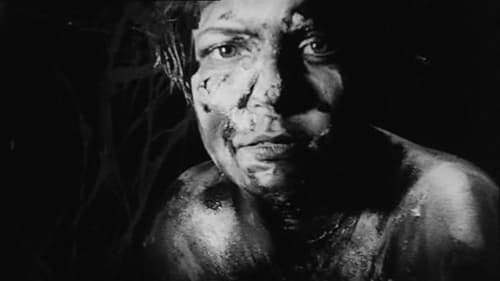
Director
Short experimental film by Stephen Dwoskin.

Sound
Trixi is Dwoskin’s most convulsive version of his recurrent theme: the confrontation of a solitary girl with the camera. Shot in one continuous 8-hour session. Trixi records Beatrice Cordua’s responses to the situation, from initial shyness, fear and withdrawal through teasing and posturing to naked surrender and final exhaustion …. The camera is highly mobile; often confronting the girl in extreme close-ups, sometimes swooping down from overhead, sometimes searching to “recapture” her …. The camera itself is the object of erotic desire, [in] the sense of giving a performance shifting imperceptibly in a helpless self-exposure in response to its constant stare. Clearly, the form of the film was dictated by the response of the performer. Beatrice Cordua proves Dwoskin’s most expressive subject to date, and the film is correspondingly “open,” the camera having been willing to choose its tactics as direct responses.

Director
Trixi is Dwoskin’s most convulsive version of his recurrent theme: the confrontation of a solitary girl with the camera. Shot in one continuous 8-hour session. Trixi records Beatrice Cordua’s responses to the situation, from initial shyness, fear and withdrawal through teasing and posturing to naked surrender and final exhaustion …. The camera is highly mobile; often confronting the girl in extreme close-ups, sometimes swooping down from overhead, sometimes searching to “recapture” her …. The camera itself is the object of erotic desire, [in] the sense of giving a performance shifting imperceptibly in a helpless self-exposure in response to its constant stare. Clearly, the form of the film was dictated by the response of the performer. Beatrice Cordua proves Dwoskin’s most expressive subject to date, and the film is correspondingly “open,” the camera having been willing to choose its tactics as direct responses.

Director
A static camera records, in one single continuous shot, a woman's face before, during and after orgasm. The act of looking and the limits of the film frame are highlighted in this intimate sexual episode with Tina Fraser. Artist Stephen Dwoskin presents a powerful, personal moment while maintaining a distance and resisting the viewer being subsumed into the action on screen.

Editor
Featuring Joan Adler (who also appears in Chinese Checkers), Soliloquy is one of the four early Stephen Dwoskin films that were awarded the Solvey prize at the EXPRMNTL festival in Knokke, Belgium in 1967. “In Soliloquy a girl broods uncertainly over a failed love affair, while the camera roves over her fingers, her cigarette, her knuckles, her lips and the hand mirror in which she peers. In its dark reflection one isolated eye seems a dead thing, twitching; the split between her body and her spoken thoughts becomes a strange bilocation of consciousness; towards the end, an aeroplane drones overhead” (Raymond Durgnat)

Cinematography
Featuring Joan Adler (who also appears in Chinese Checkers), Soliloquy is one of the four early Stephen Dwoskin films that were awarded the Solvey prize at the EXPRMNTL festival in Knokke, Belgium in 1967. “In Soliloquy a girl broods uncertainly over a failed love affair, while the camera roves over her fingers, her cigarette, her knuckles, her lips and the hand mirror in which she peers. In its dark reflection one isolated eye seems a dead thing, twitching; the split between her body and her spoken thoughts becomes a strange bilocation of consciousness; towards the end, an aeroplane drones overhead” (Raymond Durgnat)

Director
Featuring Joan Adler (who also appears in Chinese Checkers), Soliloquy is one of the four early Stephen Dwoskin films that were awarded the Solvey prize at the EXPRMNTL festival in Knokke, Belgium in 1967. “In Soliloquy a girl broods uncertainly over a failed love affair, while the camera roves over her fingers, her cigarette, her knuckles, her lips and the hand mirror in which she peers. In its dark reflection one isolated eye seems a dead thing, twitching; the split between her body and her spoken thoughts becomes a strange bilocation of consciousness; towards the end, an aeroplane drones overhead” (Raymond Durgnat)
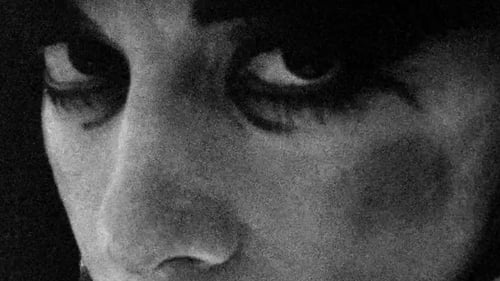
Editor
His Oriental predator is at first clothed in black, her 'victim' in white; slowly the costumes change, the victim acquiring a veil of mourning, until finally - as if to underline the ambiguity and interchangeability of their respective roles - the colours are reversed altogether. Still more interesting is the way in which, as the game becomes more ambiguous, Dwoskin adds fresh layers of make-up to his characters' faces, until they become almost caricature masks of their original selves.

Cinematography
His Oriental predator is at first clothed in black, her 'victim' in white; slowly the costumes change, the victim acquiring a veil of mourning, until finally - as if to underline the ambiguity and interchangeability of their respective roles - the colours are reversed altogether. Still more interesting is the way in which, as the game becomes more ambiguous, Dwoskin adds fresh layers of make-up to his characters' faces, until they become almost caricature masks of their original selves.

Director
His Oriental predator is at first clothed in black, her 'victim' in white; slowly the costumes change, the victim acquiring a veil of mourning, until finally - as if to underline the ambiguity and interchangeability of their respective roles - the colours are reversed altogether. Still more interesting is the way in which, as the game becomes more ambiguous, Dwoskin adds fresh layers of make-up to his characters' faces, until they become almost caricature masks of their original selves.

Cinematography
Filmed in New York in 1964, completed in London 1967.

Editor
Filmed in New York in 1964, completed in London 1967.

Director
Filmed in New York in 1964, completed in London 1967.

Editor
Images of a woman lying on a bed appearing to have a sexual fantasy for lack of anything else to do.

Cinematography
Images of a woman lying on a bed appearing to have a sexual fantasy for lack of anything else to do.

Director
Images of a woman lying on a bed appearing to have a sexual fantasy for lack of anything else to do.

Director
Stephen Dwoskin's first film, made in New York. A woman's feet during a whole night of sleep contracted into four minutes.
